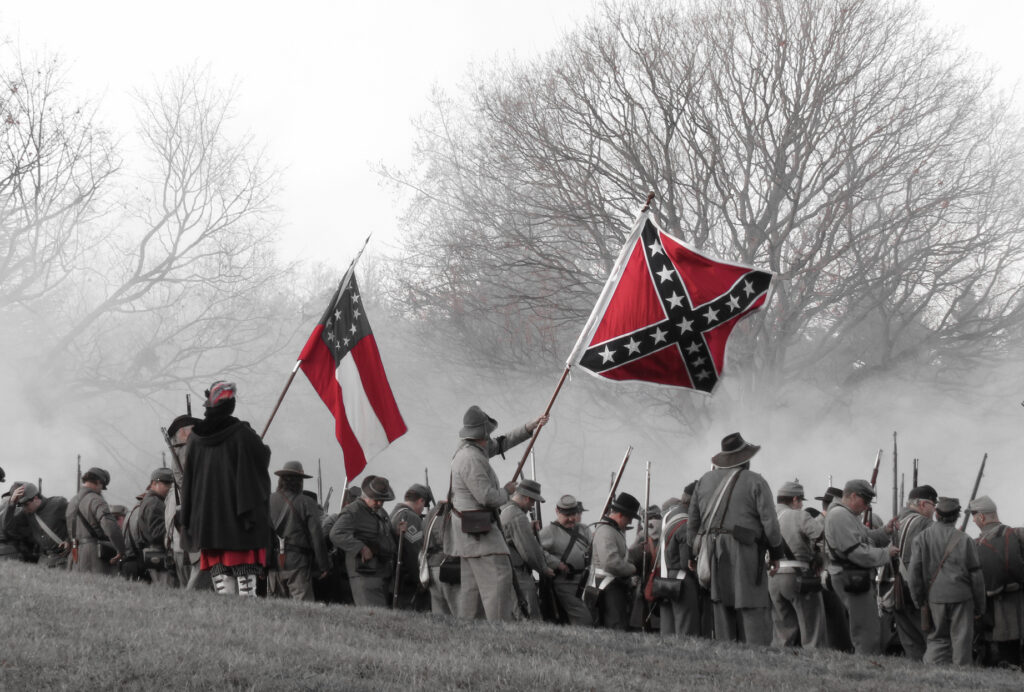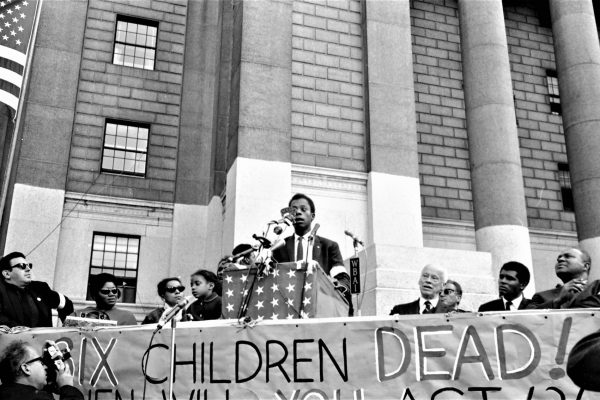Just months after the 2008 election of the first black president, Lisa Duggan predicted in The Nation that the dramatic economic downturn taking place at the time would give rise to “new forms of authoritarian oligarchy, transformed modes of participatory democracy,” and “resurgent xenophobic nationalisms.” Sound familiar?
The election and subsequent actions of President Donald Trump have caused many observers to more recently question whether or not democracy in the United States is in peril. But while Trump is indeed a threat to democracy, it is important for those of us concerned about the more existential challenges—e.g., new voter suppression laws, unlimited money in politics, unprecedented economic inequality, resurgent white supremacy as well as low-grade anti-blackness, its more common and invidious cousin—to recognize that these are not new problems. They did not arrive on the scene with Trump. In other words, even if Hillary Clinton were in office, my best guess is that the tiki torch-bearers would have still gathered in Charlottesville to protest the removal of a statue of Confederate General Robert E. Lee.
The dichotomy between our race problem and our economic inequality problem is false. The history of whiteness is tied to racially discriminatory labor, housing, and education policies.
After all, Duggan’s prediction was not formed in a vacuum, but rather used history as a signpost. Ever since the nineteenth century, the same historical pattern—anti-racist resistance followed by populist revolt—has repeated itself about every two generations. From southern white redemption in the wake of the political assent of African Americans during Reconstruction to northern racial violence in the wake of the Great Migration, to massive resistance and anti-busing activism in the wake of the desegregation of public education, there is no history of white populism in the United States that is not tied to racially discriminatory labor, housing, and education policies.
The only way to break this cycle and redefine what all Americans owe each other is a broad-based commitment to reconciling the deeply intertwined nature of racism and populism. This can and should be done through a robust and energetic black public sphere, which on its own has a long and accomplished history. We often retreat behind a false dichotomy between our country’s long-standing race problem and our economic inequality problem. But global capitalism itself was first rooted in conquest and then nourished by the placenta of the transatlantic slave trade. Coerced black and brown labor and stolen indigenous land have all subsidized, to varying degrees, the economic hopes and dreams of white America. Today’s increasing class proximity and economic insecurity of the bottom 80 percent of white, black and brown Americans reveals the attempt to regain control, yet again, by whites. “Make America Great Again,” indeed.
None of this is new, except all of it is. The same lessons have to be relearned over and over again. Americans are generally allergic to the notion that the history of race in the United States is akin to the history of religion for much of Europe’s past. My guess is that no one of European heritage with at least an eighth grade education would deny how competing religious beliefs before the eighteenth century powerfully shaped notions of humanity there—including everything from one’s lot in life to their right to live. Race and racism became a new religion of the West in the Enlightenment period. We can no more escape this history than we can ignore the churches, synagogues, mosques and temples that in part continue to shape the terrain of our cultural and political lives. As such our desire to forget or erase our racial past is a critical ingredient in democracy’s descent. To put it in terms economists can appreciate: historical amnesia ensures our reversion to the mean.
The racial triumphalism that greeted the election of Barack Obama did not help the situation. In fact in many ways it may have accelerated the latest crisis. The problem, of course, was not the election of a brilliant and thoughtful black man to the White House. The problem was the widely held notion that his election meant putting our nation’s racial past in the dustbin of history. Until Black Lives Matters activists reinvigorated black civil society, the United States had been working towards the goal of moving past race. In the age of Obama, to be truly exemplary and successful was to be post-black, as the writer Touré described, or in the critical words of Washington Post columnist Eugene Robinson, to be “transcendent,” like Oprah.
The election of Barack Obama was commonly understood as putting the nation’s racial past in the dustbin of history. In my ways, this notion accelerated the current crisis.
But the model for improving our democracy has long been the other side of the coin of populist revolt. It has involved a robust black public sphere—built by the people the late Derrick Bell, a pioneering critical race theorist, once called “faces at the bottom of the well.” As victims of history, antiracist black activists maintained their humanity and found agency in the struggle against their oppression. In the process they expanded democracy while increasing economic mobility for others, including white women and new immigrants from the colored nations of the world.
On the eve of Obama’s 2012 reelection, the political scientist Michael Dawson warned in this journal that, “Today there is a disconnect between black organizing and other mobilizations on behalf of labor, suffrage, and radical economic reform. Even worse, the black civil society that in the past supported flourishing black activism is today weaker than it was for most of the twentieth century. Without a mobilized black politics, American democracy is even more vulnerable to internal attacks by those who have been openly suspicious of mass democratic movements for decades.” To push the argument one step further, what might have been the beginning of a new shared history of recognizing the relationship of black activism to the expansion and durability of American democracy became, instead, another occasion for revolt and a return to an ahistorical embrace of American exceptionalism.
And so here we are. The Charlottesville Riot is a revolt against the resistance of black activists to the symbols of white supremacy, the erasure of the black public sphere, and the crisis of neoliberalism. Across the political spectrum the riot has galvanized good people to stand up against naked and bold displays of white supremacy and Neo-Nazism. But will it galvanize those same people to reject the systemic logic of anti-blackness (which is also anti-Latino, anti-Native, anti-Muslim)? While many white Americans admire, respect and even love other Americans who happen to be black or Mexican or Muslim, they have a much harder time admiring, respecting and loving categorically African Americans, Native Americans, Mexican Americans or Muslim Americans just as they love themselves.
And that is because each of these groups has been perceived by white America as deficient by dint of their own history or culture or nationality or religion. The price of the ticket, as James Baldwin once said, is to admit the flaw of your separate identity (which means your history, heritage and beliefs), renounce yourself, and embrace the United States, which has been marked as white since its inception. While the United States has expanded its borders of inclusion over time, the borders of whiteness have never fallen. White nationalists who cry otherwise simply need to spend more time in museums. White identity is the mortar that binds the foundation of every institution in this country. It is the air we breathe. The beauty we emulate. It is the culture that borrows, commodifies and appropriates non-white culture and accomplishment as its own.
The only way to break this cycle and expand U.S. democracy is by embracing a robust black public sphere.
The future of U.S. democracy depends not on transcendence but on embracing the history of those who struggled for an equal place in society—the people whose legacy helped make marriage equality possible or paved the way for birthright citizenship for the children of Asian, Latin American and African immigrants. It is easy to dismiss retrograde white supremacy as aberrational and a departure from our country’s real values, but that is exactly the problem. The logic of anti-blackness cannot be defeated by discrediting the Klan. Nor is it diminished by getting to know your brown neighbors or partaking in “Diversity Day” at your job.
The way forward—to break the historical cycle—is for all Americans to embrace the opposite: to teach and tell the story that blackness is an indispensable part of the nation’s greatest political traditions. Nikhil Singh in his book, Black is a Country: Race and the Unfinished Struggle for Democracy, writes that “American liberalism, from [Gunnar] Myrdal’s An American Dilemma to President Bill Clinton’s ‘National Conversation on Race’ has consistently underestimated or devalued the autonomous dimensions of black political discourse, extolling instead American political culture as the ablest, if not the only, ideological source of black struggles for justice and equality.”
Americans are fond of innovation and disruption. To be truly innovative now is to do what has never been done. Tell the story as it happened. Draw on the history lessons of those who experienced and helped to defeat anti-democratic forces or who lived under and resisted fascist regimes within the United States. The scope of such experiences stretches from coast to coast and encompasses a century of Jim Crow that ruled martially over the lives of African Americans, Mexican Americans, Chinese immigrants and Japanese internees. Likewise whites often experienced the tyranny of the majority when they chose allyship over allegiance, when they chose to resist populism. In the 1950s, for example, Anne Braden worked tirelessly and courageously alongside her husband Carl to make real Henry Wallace’s interracial, progressive vision of the nation. She organized white women to defend black male suspects who were routinely and falsely accused of rape and encouraged them to join civil rights campaigns against segregation and housing. For her efforts to resist the Dixiecrat revolt, she was red-baited, blacklisted, and, in 1954, charged with sedition.
We can choose to build a new civic culture that sees this history not as an unfortunate diversion from the inevitable march towards progress, but rather a necessary component to it. We must make it plain for the youngest of citizens and newcomers alike that U.S. democracy is in fact contingent on learning from the past, not overcoming it. Democracy can expand or contract; include or exclude; protect or destroy. But a democracy of the racially vulnerable and economically insecure is not a democracy worthy of its name. Instead, to see our democracy flourish is to demand a new origins story and new civics lessons—ones that are drawn out of the stories we keep forgetting and distorting.








